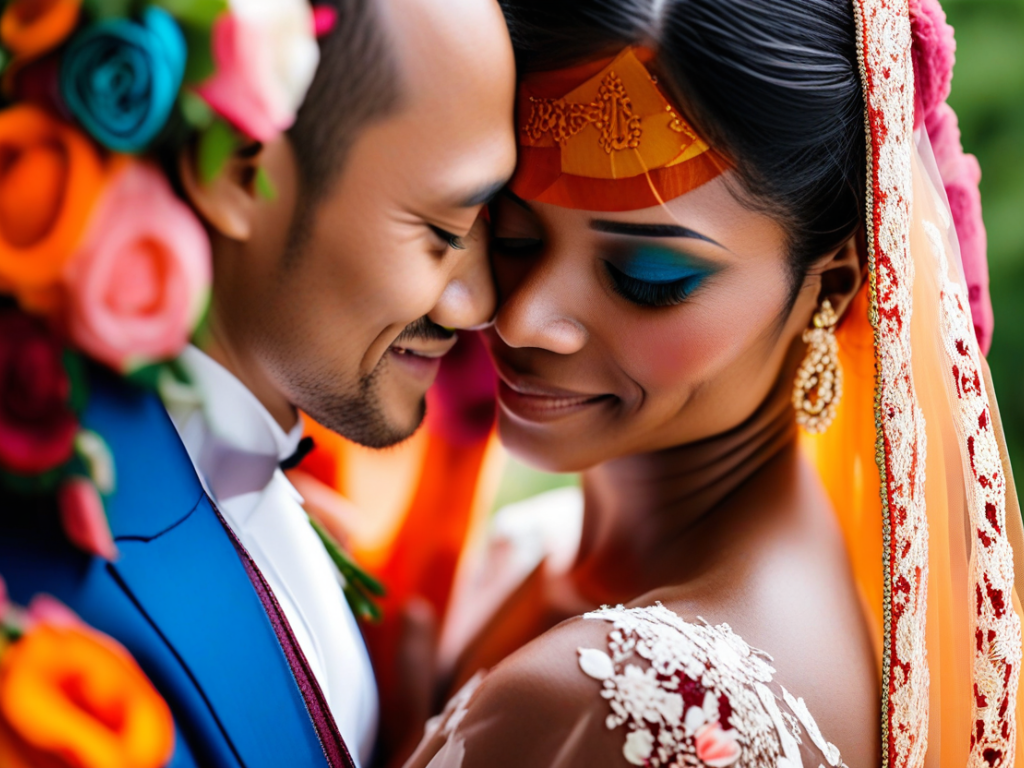When it comes to planning your wedding, choosing a color palette is a wonderful opportunity to infuse your cultural heritage and personal meaning into your special day. By incorporating colors that hold significance in your culture or that symbolize important elements of your relationship, you can create a wedding that is not only visually stunning but also deeply meaningful. Let’s explore how you can celebrate love in color by incorporating cultural symbolism into your wedding palette.
In this article you will find:
- Embracing Cultural Traditions Through Color
- Symbolism in Every Shade
- Creating Harmony Through Contrast
- Infusing Cultural Textures and Patterns
- Conclusion
Embracing Cultural Traditions Through Color
Your cultural heritage can provide a treasure trove of inspiration for your wedding palette. Whether you draw from traditional attire, festive celebrations, or symbolic meanings, incorporating cultural colors can add a rich layer of significance to your big day. For example, in Indian weddings, red is often associated with luck and fertility, while in Chinese weddings, red symbolizes happiness and good fortune. By incorporating these cultural hues into your wedding decor, attire, and floral arrangements, you can honor your heritage in a beautiful and meaningful way.
Symbolism in Every Shade
Colors hold unique symbolic meanings across different cultures and can represent a wide range of emotions, values, and beliefs. For example, white is commonly associated with purity and new beginnings in Western traditions, while gold symbolizes prosperity and good fortune in many Asian cultures. Consider incorporating colors that hold personal significance for you and your partner, whether it’s the blue of the ocean where you got engaged or the green of the mountains where you first met. Infusing these personal symbols into your wedding palette can create a truly personalized and heartfelt celebration.

Creating Harmony Through Contrast
When selecting your wedding colors, think about how different hues can complement and contrast with each other to create a harmonious palette. Bold, contrasting colors can make a statement and add visual interest to your wedding decor, while subtle tonal variations can create a sense of depth and sophistication. For example, pairing rich jewel tones with metallic accents can create a luxurious and opulent atmosphere, while combining soft pastels with neutral shades can evoke a sense of elegance and simplicity. By playing with color contrasts, you can design a wedding palette that is as unique and vibrant as your love story.
Infusing Cultural Textures and Patterns
In addition to incorporating cultural colors into your wedding palette, consider integrating traditional textures and patterns that hold significance in your heritage. For example, you could adorn your tables with intricately embroidered linens, incorporate handcrafted textiles into your decor, or incorporate traditional motifs into your stationery design. These cultural elements can add a tactile dimension to your wedding decor and create a sensory experience for you and your guests, immersing everyone in the rich tapestry of your cultural heritage.
Conclusion
Your wedding palette is a canvas on which you can paint a beautiful picture of your love story, incorporating cultural symbolism and personal meaning into every hue and shade. By embracing your heritage, infusing personal symbols, playing with color contrasts, and integrating cultural textures, you can create a wedding that is not only visually stunning but also deeply meaningful and reflective of your unique journey as a couple. Celebrate love in color by crafting a wedding palette that embodies the essence of who you are and the cultural traditions that are close to your heart.


